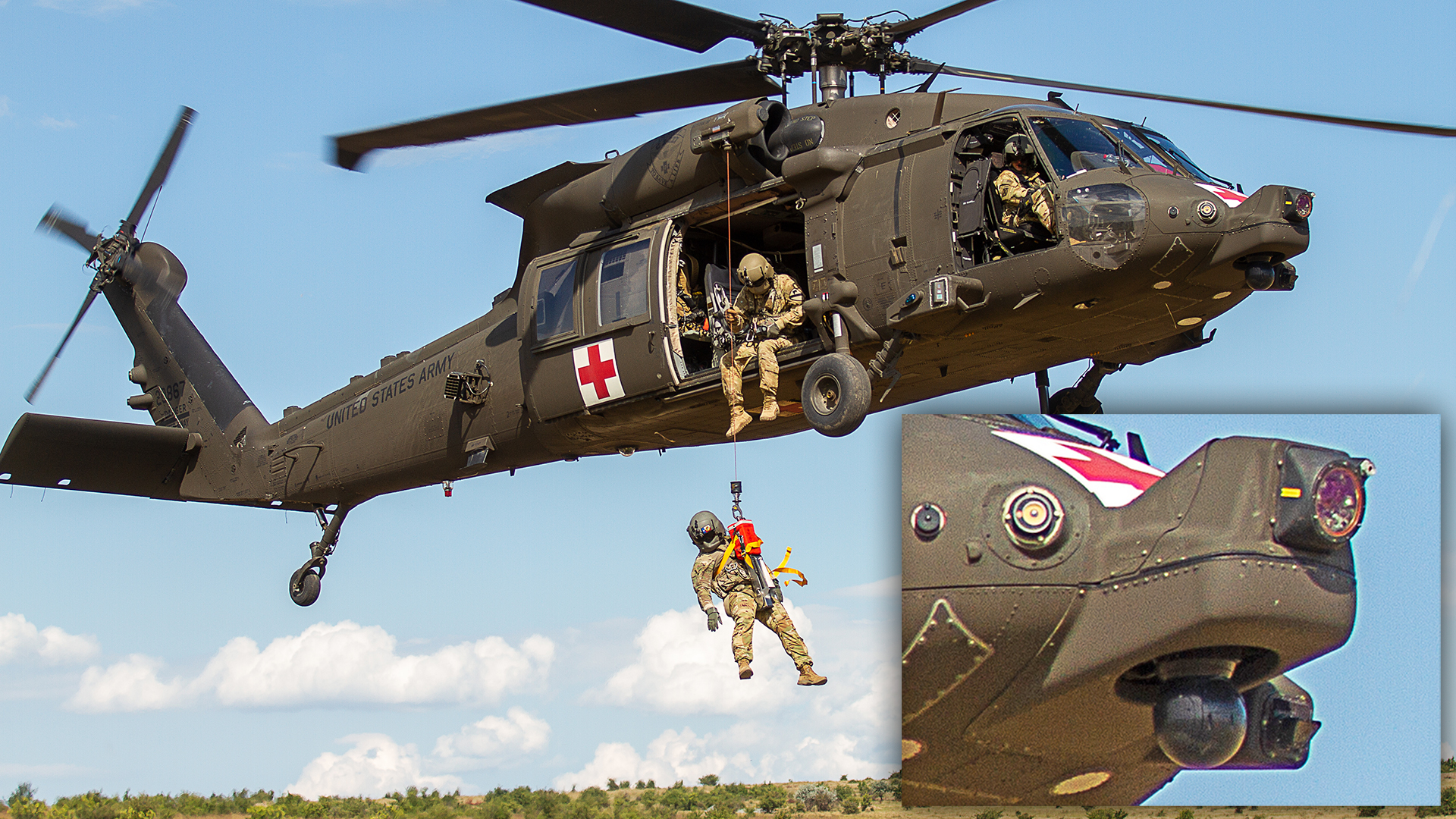Recognizing the Duty and Significance of Various UH60 Components in Air Travel Operations
In the elaborate globe of aviation operations, every part of a UH60 helicopter plays a critical role in making sure safe and effective flights. From the rotor system to the landing gear, each component has a particular feature that contributes to the overall efficiency of the aircraft. Recognizing the ins and outs of these parts is not only crucial for the maintenance employees however also for the pilots who rely upon the seamless operation of every part for an effective goal. As we explore the relevance of the blades system, engines, avionics, transmission system, and touchdown gear in UH60 procedures, a much deeper admiration for the synergy of these aspects arises, shedding light on the intricacies that underpin the air travel sector's dedication to precision and dependability.
Rotor System
The blades system, a vital element in helicopter style, plays a crucial role in supplying lift and directional control throughout trip. Consisting of the major rotor and tail blades, this system is responsible for producing the needed wind resistant forces to keep the helicopter manoeuvrable and air-borne.
In comparison, the tail rotor, placed at the tail end of the helicopter, combats the torque created by the major blades's turning, making sure the helicopter remains balanced and can make regulated turns. Together, these blades parts create an innovative system that makes it possible for helicopters to do a broad variety of flight maneuvers efficiently and securely.

Engines
In aeronautics operations, the appropriate functioning of engines is vital to matching the blades system's aerodynamic capabilities in helicopters. These turboshaft engines are essential components that power the main rotor transmission, tail rotor system, and other crucial helicopter systems. uh 60.
In situation of engine breakdowns or emergency situations, pilots rely on their training and the helicopter's style attributes to execute required procedures swiftly and safely. On the whole, the engines in UH60 helicopters are vital components that add considerably to the aircraft's functional success and objective performance.
Avionics
Avionics modern technology plays a critical duty in modern-day aeronautics procedures, integrating electronic systems for interaction, airplane, and navigating administration. In the UH60 helicopter, avionics encompass a vast array of systems that ensure reliable and secure trip. uh 60. These systems consist of interaction devices, such as radios and transponders, which make it possible for pilots to interact with air traffic control service and other airplane. Navigating systems, like GPS and inertial navigating units, offer accurate placing information to the crew, aiding in route planning and ensuring exact navigation during trips. Furthermore, avionics consist of flight monitoring systems that aid automate different jobs, such as auto-pilot functions and flight data recording.
In addition, straight from the source avionics play a vital duty in improving situational recognition for pilots, allowing them to keep track of vital flight criteria, climate condition, and prospective risks in real-time. By supplying vital information and automation capacities, avionics add substantially to the safety and security, efficiency, and total performance of UH60 helicopters in diverse air travel operations.
Transmission System
An important element of the UH60 helicopter's performance and efficiency is its transmission system. The transmission system in a UH60 helicopter is in charge of transferring power from the engines to the main blades and tail rotor systems. This essential part guarantees that the helicopter can navigate successfully and maintain stability throughout flight procedures.
The transmission system in the UH60 helicopter contains numerous components, including the main gearbox, intermediate gearbox, tail gearbox, and drive shafts. Each of these elements plays an essential duty in ensuring that power is dispersed effectively throughout the aircraft.
The major transmission is specifically crucial as it transfers power from the engines to the major blades system, allowing the helicopter to take off the ground and accomplish forward, backward, and lateral activity. The tail transmission, on the other hand, transfers power to the tail blades, which aids neutralize the major blades's torque and gives directional control.
Touchdown Equipment


The touchdown gear of the UH60 helicopter works as a vital part for making certain safe and secure ground procedures, complementing the performance of its transmission system. Containing wheels, shock absorbers, and assistance frameworks, the touchdown equipment supports the helicopter's my explanation weight during takeoff, touchdown, and while on the ground. The layout of the touchdown gear is essential for dispersing the airplane's weight uniformly to avoid tipping or architectural damages. Furthermore, the touchdown gear plays an essential role in soaking up the influence of landings, reducing the stress and anxiety on the airframe and ensuring a smooth touchdown. Appropriate upkeep of the touchdown equipment is necessary to guarantee optimal efficiency and safety and security during operations. Regular inspections, lubrication, and substitute of damaged components are essential to promote the dependability and efficiency of the touchdown gear system. Pilots and landing crew must stick to proper procedures to guarantee the integrity of the landing gear and improve overall flight safety.
Conclusion
In verdict, the various components of the UH60 helicopter play vital duties in ensuring the smooth operation of aviation activities. uh 60. The blades system, engines, avionics, transmission system, and touchdown gear all interact to guarantee the safety and security and performance of the aircraft. Comprehending the significance of each element is essential for pilots, engineers, and maintenance crew to make certain the general capability of the UH60 helicopter throughout trip operations
